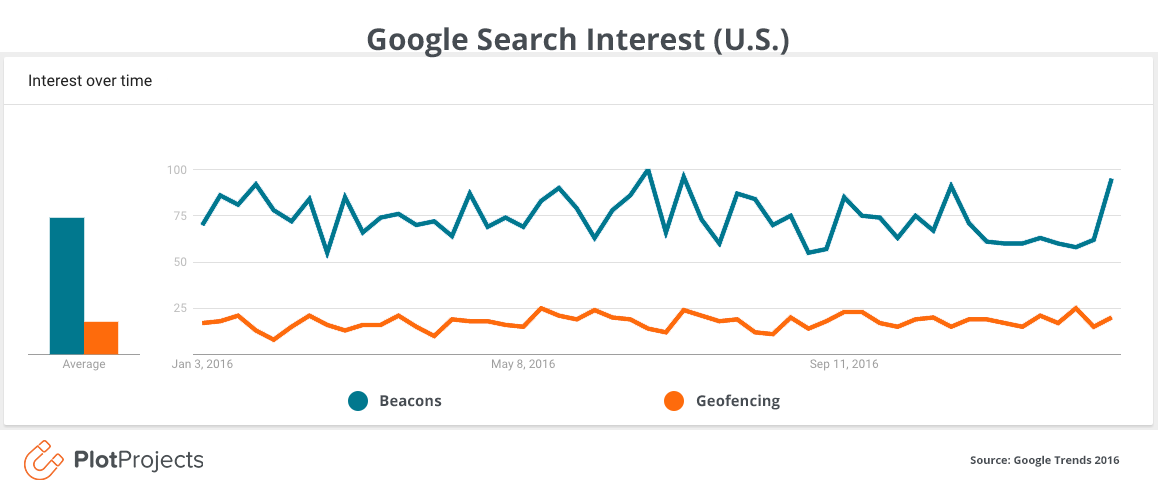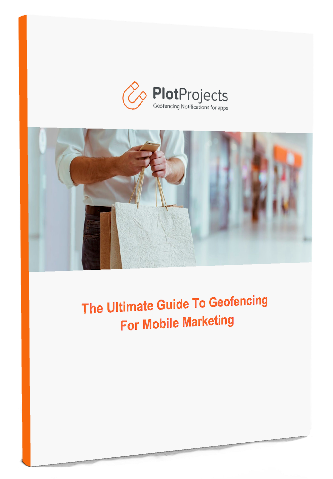Beacons here, beacons there… The new bluetooth devices get extensive media coverage. But are they effectively used irl? Let me debunk that for you!
Why are beacons getting all the media attention? Why are we barely reading anything about geofencing? These are questions I started asking myself after months of being bombarded with news about all these companies trying out beacons, while rarely finding any kind of news on the topic that really interested me; geofencing. Yet, both beacons and geofencing essentially serve the same marketing purpose, which is sending notifications to potential customers when they approach a predefined location (with the difference that beacons are originally designed to show content when the app is in use). So how come geofencing gets so little coverage in the media?
![]()
Over the last few years, beacons have created buzz in the tech community. As a brand new technology and marketing tool, beacons are tested and deployed by a multitude of brands eager to differentiate themselves and hop on the wagon before the rest of the world does. And each time, it inevitably gets the marketer community talking.
Not only are beacons a hot topic in the technology and marketing scenes, but consumers are showing interest in the bluetooth devices as well. After the story of ad provider Titan installing beacons in New York City phone booths went viral, consumers became active players in the beacons phenomenon. The story was widely mediatized when the public strongly reacted against iBeacons, believing the devices were tracking their every move and used for mass surveillance. Although it was triggered by a generalized misconception of beacons, the story largely participated in the beacon hype and triggered public awareness.
However, while beacons get great media coverage and public attention, geofencing is still fairly unknown and non-mediatized. As a matter of fact, my Google Alerts for “geofencing” are dead silent, and when there finally is something said about the topic, it feels like Christmas came early. The lack of attention geofencing gets in the media keeps on surprising me. Not only does it basically serve the same purpose as beacons, which is to trigger location-based notifications, but geofencing is actually used far more than its presence in the media seems to indicate (Snapchat and Uber, for example, are amongst the numerous fervent users).

Working at Plot Projects (supporting both geofencing and beacons), I get to witness both technologies’ performances and usage first-hand. Beacons are great for certain use cases, such as micro-location targeting (for example targeting people in a specific aisle of your store with a specific offer), as they are effective on a small radius. However, our experience is that geofencing gets far more usage as it is efficient for targeting users both in-store and around it (possibly even your competitors’ stores or any other location that could serve your strategy), bringing foot traffic to stores and increasing sales. As a result, out of all the notifications sent by Plot Projects’ users, only 0.1% were sent through beacons while the rest were all triggered by geofences. Striking isn’t it?
Out of all the notifications sent by Plot Projects’ users, only 0.1% were sent through beacons while the rest were all triggered by geofences.
All-in-all, the usage I witness is far from consistent with the coverage they generate. Foursquare, Vouchercloud, Savings.com, Vodafone and LG , just to name a few, use geofencing as part of their business, and I could list many more. Beacons are a completely different story! Sure, some big companies such as Macy’s have started using them. But unlike geofencing, I couldn’t find a single one using beacons as a proper component of their company’s marketing strategy. Beacons are, still, reduced to the status of pilots in most of the cases we read about.
In addition, beacons need to be purchased, installed and require maintenance (e.g. battery changes, amongst other things). What about geofencing, you ask me? Quite the opposite, my friend. As they are virtual perimeters, they do not require a physical device and you can simply create and manage them in an online dashboard. No need to move from your comfortable desk chair, simply define the area on a map in which you want your notifications to be triggered: cheap, quick, effortless, and much more scalable! On top of the logistic imperatives beacons call for, there is another significant difference between the two, and that’s Bluetooth. Beacons require users’ Bluetooth to be switched on in order to detect the device and send the notifications. Now, you probably guessed it, Geofences don’t.
So, why are beacons the new “IT-thing”? My guess is that a combination of factors built the hype around beacons rather than geofencing. Starting with the concept itself; the idea of a bluetooth device triggering an action in users’ phones is more concrete and easier to grasp than that of a virtual perimeter. Additionally, beacons are sexier, aren’t they? They are a physical object you can own, hold, touch (and pay for). And last but not least, beacons’ popularity was boosted by Apple’s iBeacons. The famous “i” prefix makes it so much more appealing, attractive, desirable; so much cooler! None of us can deny Apple’s terrific power to create excitement, enthusiasm and overall demand of their products (Jimmy Kimmel conducted the experiment a while back).
Ultimately, beacons haven’t truly shown results as a self-standing strategy. Geofencing, on the other hand, proved its effective application times and times again. It surprises me that a technology that is now actively part of so many companies’ marketing strategy gets talked about so little. So, will geofencing pick up the pace? I guess time will tell.
 |
Author: Mathilde Schneider
Mathilde is a marketing and communication specialist at Plot Projects. On top of her standout writing and web usability skills, she is known for her love of gifs and silly photoshopping. |
 |
Want to know more about geofencing?Download the Ultimate Guide to Geofencing for Mobile Marketing to find out more about geofencing and beacons and why to use them in your app. |

